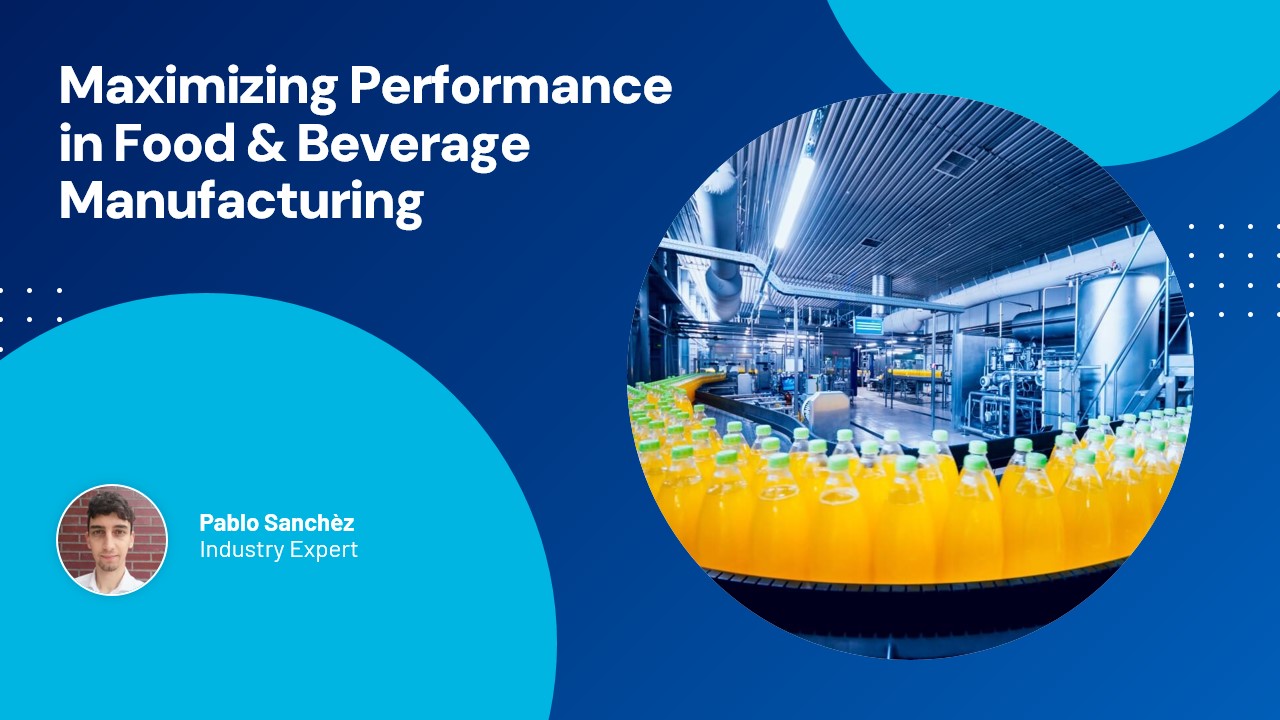

From Static Protocols to Data-Driven Cleaning CIP cycles in F&B often follow long-standing routines—fixed intervals and predefined conditions. Yet many rinse, caustic, and acid phases are not fully optimized or updated. To improve efficiency, the team needed:
- A complete historical view of CIP cycles and durations
- Links to lab results (e.g., microbial counts)
- Real-time parameters for critical bottleneck assets that must operate at full capacity
The Approach
- Asset Status Tracking: all CIP-related assets (valves, pumps, tanks, sensors) are monitored in real time and visualized in Gantt charts—providing a clear timeline of each cleaning event, classified by duration and status.
- CIP Cycle Analysis: all CIP phases (pre-rinse, caustic, intermediate rinse, acid, final rinse) are automatically segmented and benchmarked. We flag excessive durations, missing steps, and chemical overuse.
- Golden Batch Identification: The shop floor experts, by using searches and attached calculations, can detect the most efficient, compliant CIP cycle—the "golden batch"—and compares each new cycle against it to detect deviations or inefficiencies.
- Actionable Insights: dashboards highlight opportunities to shorten cycle times, reduce consumption, and schedule cleaning based on actual need, not fixed assumptions.
Insight
By replacing guesswork with process intelligence, teams gain full visibility into how each CIP cycle performs—and how it could improve. Example: Overlong rinse steps across all lines revealed 12% of total CIP time was unnecessary.
Results
| KPI | Result |
|---|---|
| Cleaning Time | Reduced by up to 20% |
| Chemical & Water Use | Cut by 10–15% |
| Asset Uptime | Increased by optimizing scheduling |
| Visibility | Full traceability via Gantt view |
| Process Benchmarking | Golden batch comparison enabled |
Takeaway
Smarter CIP starts with data. By visualizing and comparing every cleaning event, operations teams can standardize best practices, minimize waste, and increase productive time—all while keeping food safety standards intact. Want to uncover hidden efficiency in your CIP processes? Let’s explore it together.
From Static Protocols to Data-Driven Cleaning CIP cycles in F&B often follow long-standing routines—fixed intervals and predefined conditions. Yet many rinse, caustic, and acid phases are not fully optimized or updated. To improve efficiency, the team needed:
- A complete historical view of CIP cycles and durations
- Links to lab results (e.g., microbial counts)
- Real-time parameters for critical bottleneck assets that must operate at full capacity
The Approach
- Asset Status Tracking: all CIP-related assets (valves, pumps, tanks, sensors) are monitored in real time and visualized in Gantt charts—providing a clear timeline of each cleaning event, classified by duration and status.
- CIP Cycle Analysis: all CIP phases (pre-rinse, caustic, intermediate rinse, acid, final rinse) are automatically segmented and benchmarked. We flag excessive durations, missing steps, and chemical overuse.
- Golden Batch Identification: The shop floor experts, by using searches and attached calculations, can detect the most efficient, compliant CIP cycle—the "golden batch"—and compares each new cycle against it to detect deviations or inefficiencies.
- Actionable Insights: dashboards highlight opportunities to shorten cycle times, reduce consumption, and schedule cleaning based on actual need, not fixed assumptions.
Insight
By replacing guesswork with process intelligence, teams gain full visibility into how each CIP cycle performs—and how it could improve. Example: Overlong rinse steps across all lines revealed 12% of total CIP time was unnecessary.
Results
| KPI | Result |
|---|---|
| Cleaning Time | Reduced by up to 20% |
| Chemical & Water Use | Cut by 10–15% |
| Asset Uptime | Increased by optimizing scheduling |
| Visibility | Full traceability via Gantt view |
| Process Benchmarking | Golden batch comparison enabled |
Takeaway
Smarter CIP starts with data. By visualizing and comparing every cleaning event, operations teams can standardize best practices, minimize waste, and increase productive time—all while keeping food safety standards intact. Want to uncover hidden efficiency in your CIP processes? Let’s explore it together.
Access now
Subscribe to our newsletter
Stay up to date with our latest news and updates.
Other Webinars on Demand
Press Play on Operational Improvement
Other Resources
Explore Our Newest Content to Maximize Your Operational Efficiency





.jpg)





